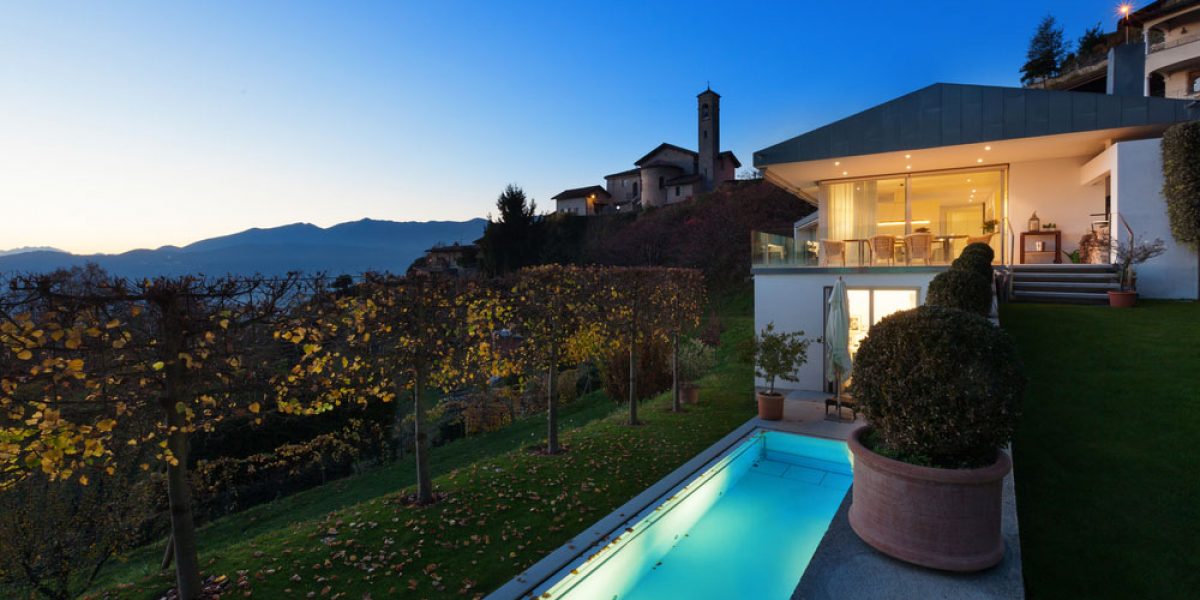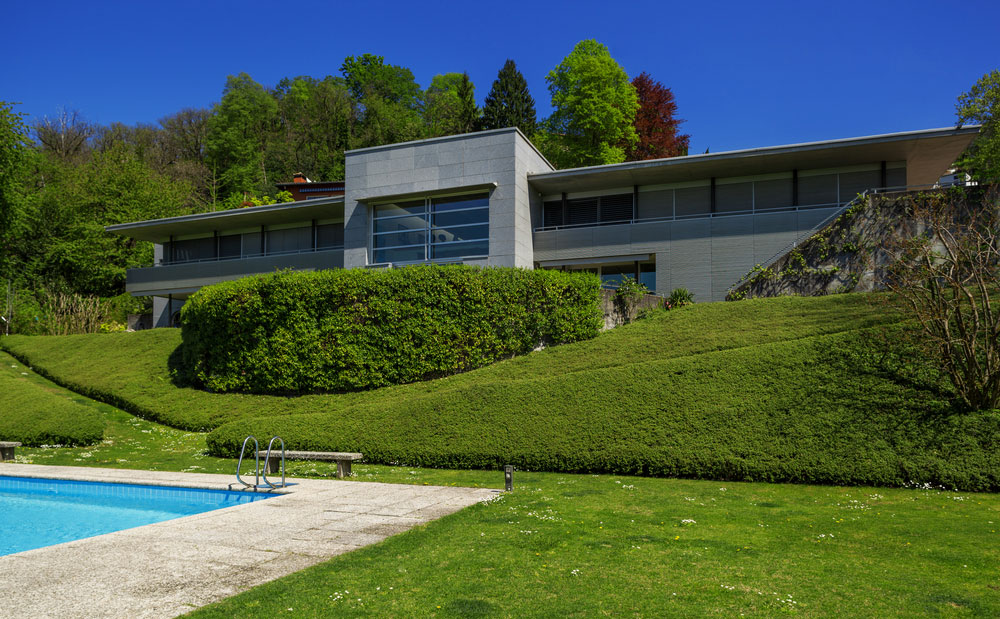A sloping block can be both a blessing and a curse. While it can offer you wonderful views with natural light, and the opportunity to build a unique and spectacular home, building on this type of land comes with its own unique challenges and requirements.
This type of building project requires meticulous analysis, planning, a more robust budget, and a full assessment of all the potential factors involved. These unique challenges will require an experienced custom home builder to design and build a house that is specifically suited to the site.
Here at Vogue Homes being in the industry for so long, we’re well accustomed to the unique challenges that building on a slope can pose. We have a proven track record of building custom homes in a variety of conditions and environments. We’ve composed this blog to help our customers be better prepared and be fully informed before they embark on their building journey.
Types of Sloping Blocks
Let’s start by defining the specifics of what we’re dealing with. A sloping block is a block of land that has an incline, decline, or slopes sideways, and isn’t flat like standard building sites.
The block will have what is termed as uneven levels of elevation, which generally means a rise or fall of approximately three metres or less across the building area.
One thing to consider with this type of block is that it is usually priced lower than a comparable level same size block. The main reason behind this is the high probability that additional costs will be incurred when building on a slope.
There are many different types of sloping blocks, but they generally fall into one of the following categories:
- Sloping up – the low point being at the road
- Sloping down – the high point being at the road
- Cross fall – the slope is from right to left or vice versa
- Cross fall + sloping – a combination of the above
Each type of slope comes with its own unique considerations but a general rule to follow is the steeper the block, the more challenges it will present.
Sloping Site Analysis
A site analysis is important when designing and planning any building. This is particularly relevant for sloping sites, which can give rise to a whole host of potentially complex building issues.
It’s recommended that you’re fully informed as the builder carries out a site inspection and analyses the physical characteristics of the land. This analysis will identify any potential costly issues that might need to be taken into consideration as part of the building process. Some of the issues covered will include:
- Severity and direction of the slope
- Topography and contour surveys
- Ground conditions
- Climate and vegetation
- Access
- Drainage corridors
The comprehensive results of this analysis will ultimately help a builder work out how to best design a home to suit the slope and determine what type of site preparation is required.
With this in mind, a person wanting to build on a difficult site should always look for a builder who is willing to do their due diligence up front. This may cost the client a little bit extra in deposit but getting the right reports done up front can save a lot of time and money in the future (and being locked into the wrong type of builder who is going to charge them more later). Look for a builder who is willing to complete surveys, Geotech reports up front to ensure they can accurately assess the block and get a better idea of what the price will be and solutions to your new home build.
Challenges of Building on A Slope
The site analysis will give you comprehensive results about factors specific to your site that must be integrated as part of the building process. Generally, the biggest challenges of building on a slope relate to the level of steepness and the type of slope. Each of these factors can affect several aspects of the building process such as; additional foundation work, difficulties in accessing the site, and the condition of the existing land.
Home construction on steep sites is always more challenging. The extra material, machinery and labour needed to make sure the house remains safe whilst being built on a slope can increase costs significantly, not just for materials but also because these aspects take longer than normal practises in order to assure quality workmanship.
In regards to access, a block’s sloping design can make it difficult for construction and materials delivery. Since there’s less access than if the site was flat, this could increase the complexity of building work leading to increased costs.
Finally, the condition of the existing land can introduce additional costs and challenges that will need to be factored into as part of the building process. As part of the site analysis, the detection of certain findings such as high levels of water retention, deep tree roots or the presence of sand/clay or rock are issues which need further investigation before building can begin.
Design Considerations
When it comes to building on a sloping block, it’s vitally important that you select a builder who has extensive experience with this type of complex building site. An experienced professional will factor in all applicable considerations and be able to make an informative and flexible approach when designing your new home.
As part of the design process, an experienced builder will be able to guide you through all aspects that are unique about building on sloped land. For example, they will help minimise costs by coming up with solutions for retaining walls or excavation requirements. They will also be able to fully factor in other design considerations such as height restrictions and draining in order to arrive at a complete building solution.
Some home design solution examples suited for a sloping block include; split levels, higher ceilings, and the incorporation of steps in and outside the home. Each of these will be dependent on the particular characteristics of the sloping site, budget considerations, and the preferences of the parties involved.
Cost of Building on a Slope
Due to the complexity of work required, the costs of building on a sloped site are going to be higher than if you choose to build on a flat piece of land.
While the exact cost can be difficult to estimate because it depends so much upon the specific circumstances of the site. However, some factors that generally influence costs, these include:
- Level of land preparation required
- Steepness of the slope
(generally the steeper the site, the more expensive the project will be) - Site access needed by required machinery and vehicles
- Any specialised materials and equipment that may be required
- Drainage and sewage issues
While sloping land tends to be more affordable, the above considerations present challenges, which will incur additional costs. Before embarking on any construction journey, it’s vital you work with your builder and make sure all issues have been considered to arrive at a proper estimate of the total building project.
Choosing the Right Builder
To be successful when building on a sloping block, it’s important to choose the right builder.
A professional who has experience designing homes with slopes will know how best to cope with any hindrances or challenges that may come along the way. They can then design accordingly to safely factor in any structural requirements while meeting aesthetic values.
Here at Vogue Homes, we’ve been building quality award winning homes for more than 35 years. During this time, we’ve built up the valuable know-how and expertise to build quality homes on sloping blocks. As part of our thorough process, where we leave no stone unturned, we’ll work with you to carry out a site inspection and analyse the physical characteristics of the land. We’ll then design a unique custom home, designed specifically to suit your individual site, needs and budget.
As you have read, building the home of your dreams on a sloping block has its pros and cons, and requires careful consideration. To suit the block of land, the building process may require a custom home design.
When it comes to building on a sloping block, the best thing you can do is find a builder that has extensive experience in working with this type of site. An experienced builder will be well positioned to work with you to conduct a thorough site analysis, which will help to identify any potential issues that require attention, minimise any ongoing risks, and ensure that building works are suited to the site’s specific requirements. An experienced builder will then be able to take an informative and flexible approach and find design solutions that factor in all applicable considerations.
If you’re after an experienced builder with the know-how and proven track record of building innovative quality homes on sloping blocks, look no further than us here at Vogue Homes. We’ll assess your site’s unique requirements and then come up with a custom design that takes into account all appropriate structural, design, and suitability considerations.
For any of you sloping block building needs, why not contact us today.



